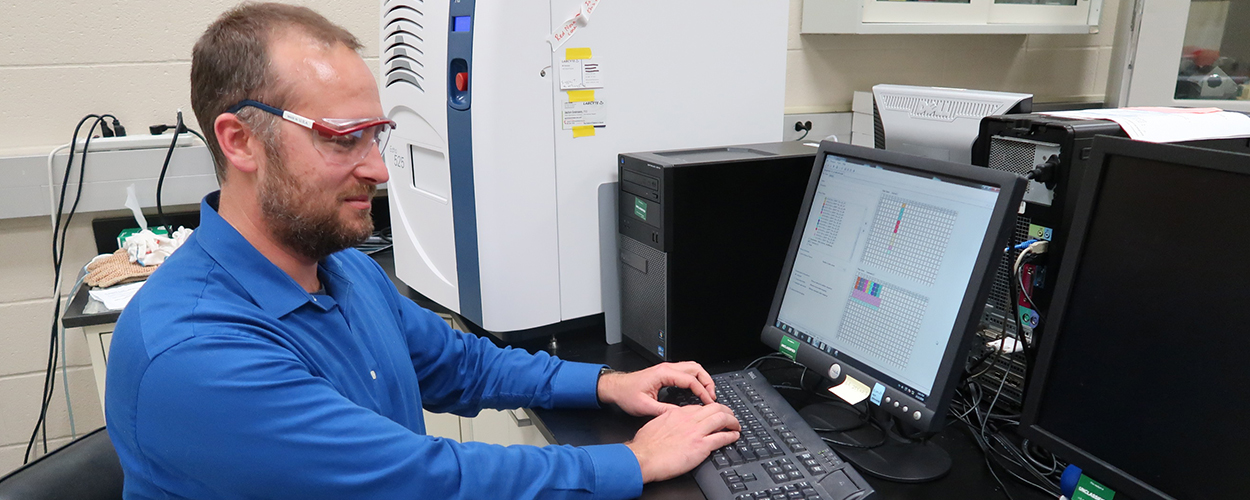Center Announces Winning IDEAS for 2020
Center Announces Winning IDEAS for 2020
Program provides seed money for innovative solutions
By Brian B. Feeney, Ph.D.
THE NEXT MAJOR ADVANCE IN CHEMICAL BIOLOGICAL PROTECTION may be among six projects selected for study under the Combat Capabilities Development Command Chemical Biological Center Innovative Development of Employee Advanced Solutions (IDEAS) Program. The researcher responsible for the idea behind each project will receive between $40,000 and $70,000 in seed money to develop his or her brainchild and demonstrate results.
Begun in 2012, the goal of the IDEAS Program is to turn these ideas into practical solutions to chemical biological defense needs that can attract customer funding. The program’s motto is “fail fast and fail early,” and the Center’s return on investment over the last seven years is ten dollars for every one spent.
Proposals addressing any CBRNE defense solution can be submitted by any Center employee. This year, the competition began with researchers from across the Center submitting 29 one-page whitepapers presenting their research idea. These were narrowed down to 12, each having to present to senior executive service members, the military deputy and senior research scientist to determine the six winners. They are:
- Sprayable Personal and Equipment Decontamination Emulsion (SPEDE) by Greg Peterson
- Advanced Sealing-Interface Surveillance Technology (ASIST) by Cody Kendig
- Evaluation of Waveguide Coatings for Sensitivity and Specificity in ICL-Based Chemical Detection Systems by Ian Pardoe
- Low Logistics Water-Free Terrain Decontaminant by Neil Hawbaker, Ph.D.
- Artificial Intelligence to Accelerate Design of Fieldable Biological Sensors by Matthew Lux, Ph.D.
- Non-focused Raman Spectroscopy-Based System for Standoff Detection by Eric Languirand, Ph.D.
The winning researchers are given eight months to conduct their study and compile results, at which time they will report back to Center leadership on their progress and research conclusions.
The IDEAS program ties directly into the Army Futures Command mission according to Center Director Eric Moore, Ph.D., “Part of the Army Futures Command mission is to innovate by creating and cultivating a culture that front-loads smart risks,” said Moore. “The IDEAS Program is the embodiment of that philosophy because we operate it on the knowledge that the next great idea can come from anyone in the organization, and it establishes a forum in which Center leadership welcomes new ideas and pays close attention to their potential.”
This year’s winners expressed their appreciation of the IDEAS Program and the opportunity it gives them. Cody Kendig, a research chemical engineer in the Respiratory Protection Branch, won a grant to pursue his idea for making sure that each of the interfaces in a personal protection suit are fully sealed.
“I know from my own experience wearing them that making sure that you have a good seal at each interface, the cuffs, collar and all of the zippers is a two-man job requiring the assistance of a buddy, and even then, you can’t know for sure if you have a total seal,” he said.
His idea was to install a fault detection sensor in each interface location on the suit. It powers a green light if fully sealed and red if not. No formal request has ever been made from a Center customer to pursue this research, so the IDEAS Program provides Kendig with the perfect way to start.
“I plan to start by making a simple prototype in a zipper swatch, see how well it works, then try it on an actual suit cuff. I’ll get feedback from warfighters and keep refining the prototype, and I hope to have fully functioning fault detection sensors for each interface as a deliverable when the eight months is over,” he said.
There were repeat winners, too. Greg Peterson, a research chemical engineer in the Chemical, Biological, Radiological (CBR) Filtration Branch, won his third IDEAS Program grant this year and his enthusiasm for the program has not ebbed. His 2020 IDEAS Program research project is to develop a prototype of a sprayable powder decontamination that will come out of a can, much like a dry shampoo spray can. “The idea is that the warfighter can easily bring it along in his equipment and pull it out if he suspects that the equipment has been exposed to agent, spray it on the equipment surfaces and get back in the fight,” he said.
He emphasized that his win was a team effort from across the Center. “The CBR Filtration Branch will assemble the ingredients and make the powder, and the Advanced Design and Manufacturing Division will make the prototype of the spray device and the Decontamination Sciences Branch will test it,” he said. “I hope to see this product become a new and improved solution for personal and equipment decontamination.”
CCDC Chemical Biological Center research biologist Matthew Lux, Ph.D., pursues his IDEAS Program project by programming an acoustic liquid handler to operate in tandem with artificial intelligence to optimize the design of sensors made from biological components. Photo by Brian Feeney.

